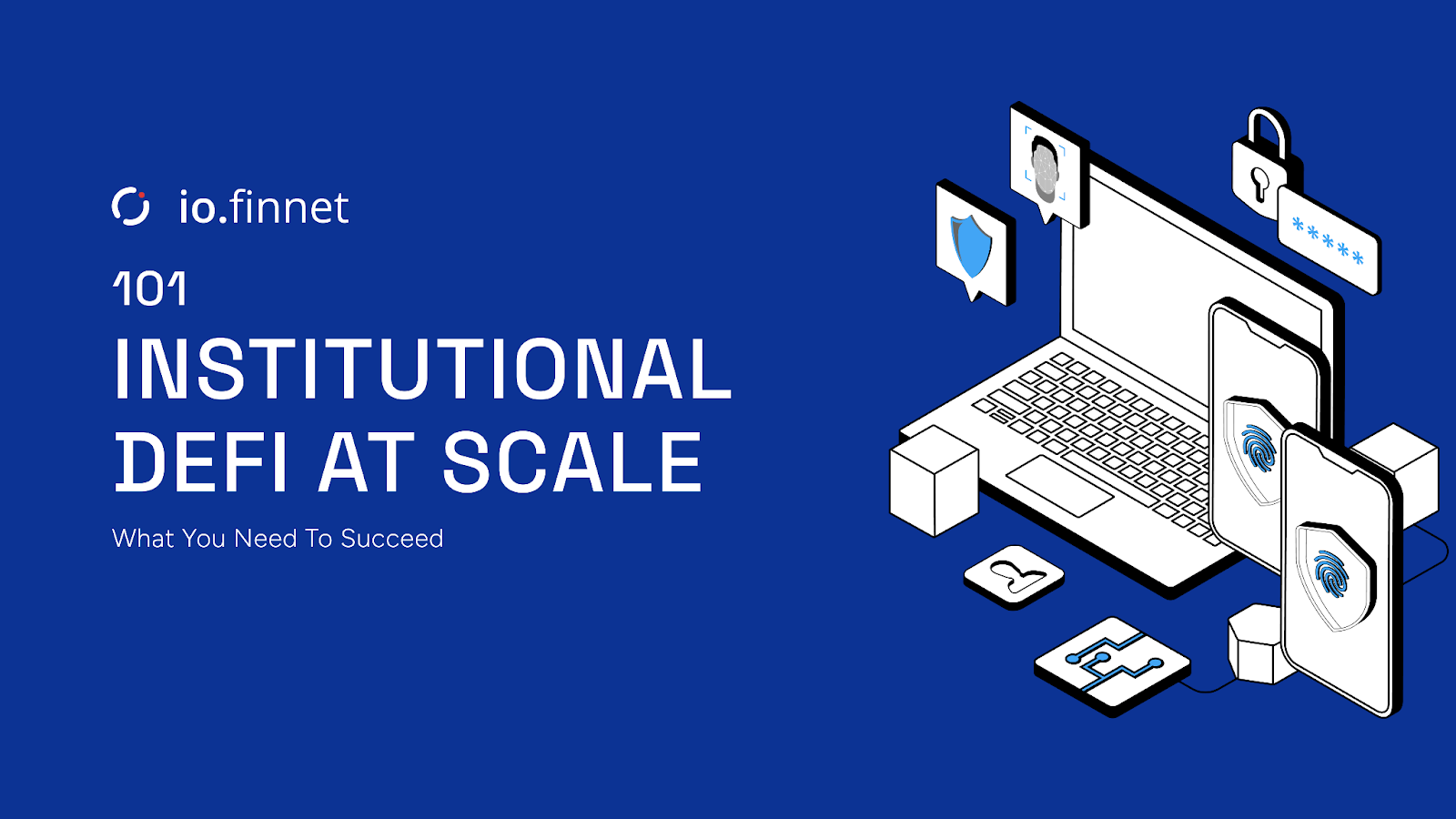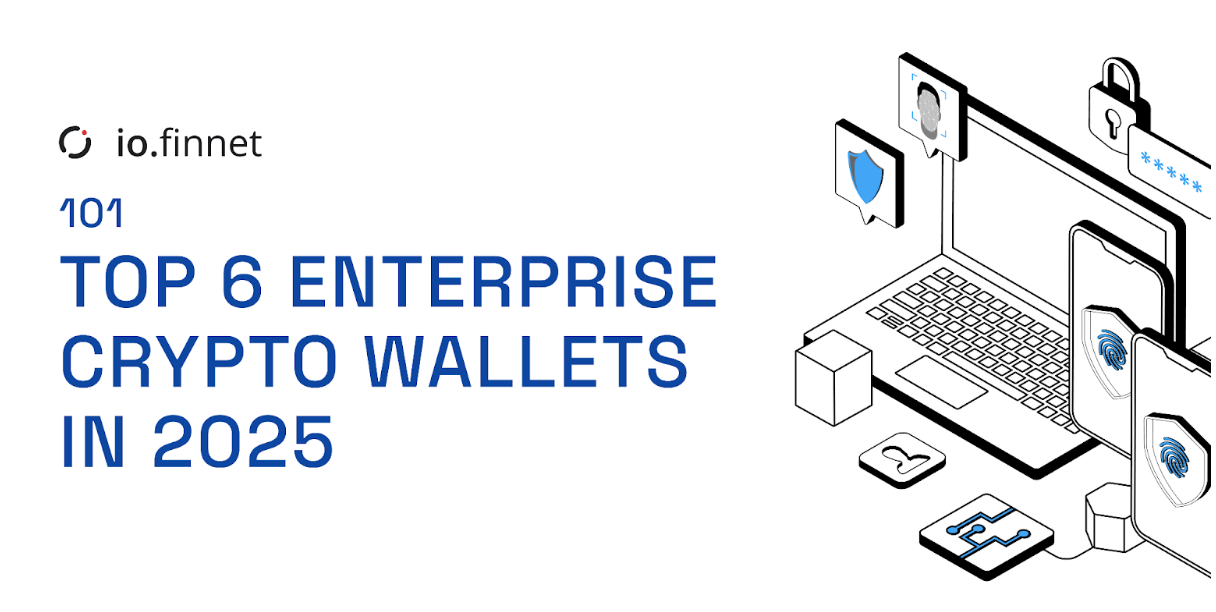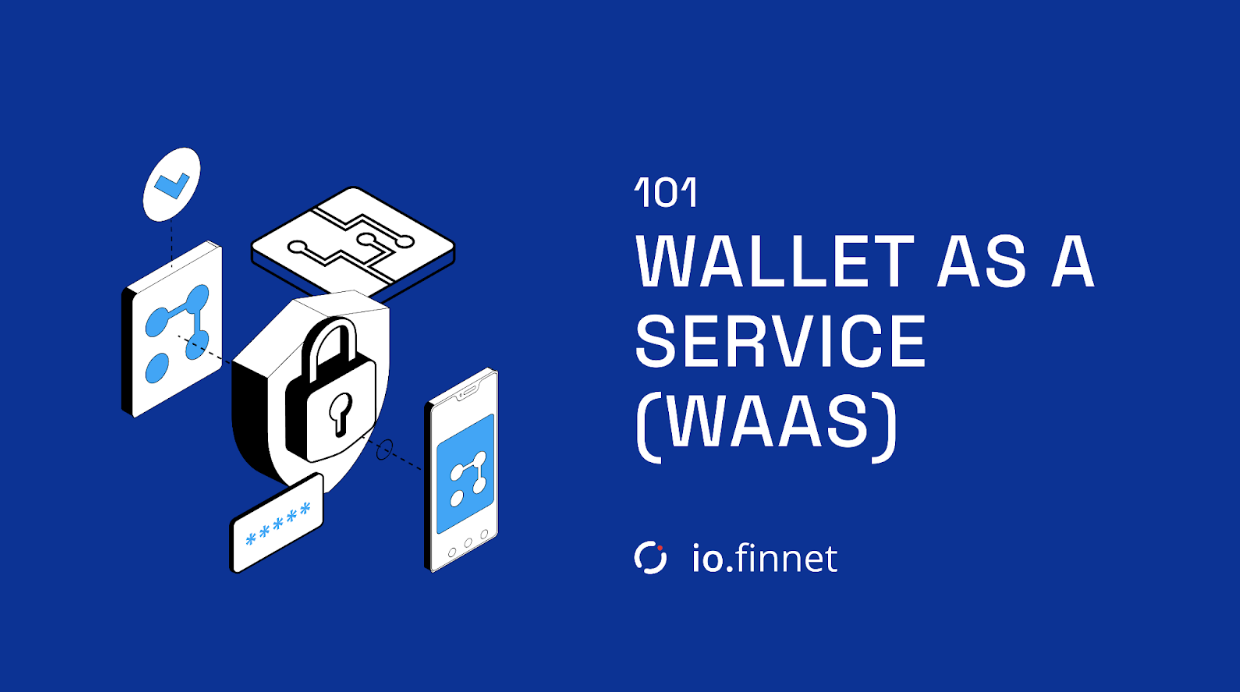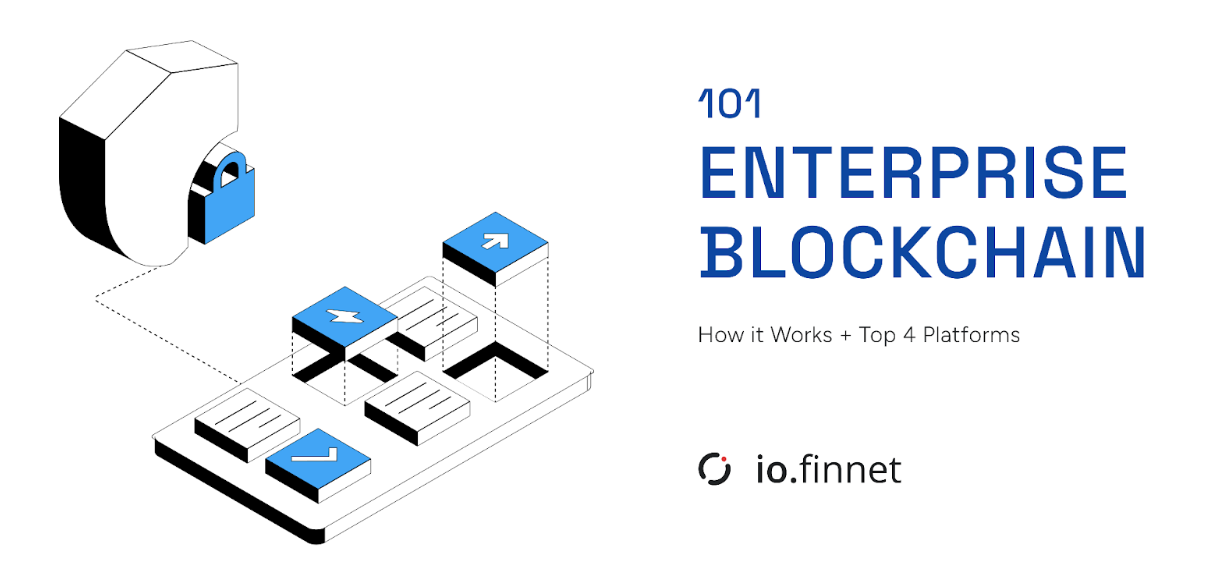LEARN
Institutional DeFi At Scale: What You Need To Succeed
The growth of decentralized finance (DeFi) and broader digital finance is rewriting the rules for the institutional investor. As the space matures, many are looking beyond the hype and focusing on infrastructure that meets their standards for security, compliance, and control.
For financial institutions, DeFi introduces new frontiers along with complex demands. Secure key management, transaction policy enforcement, and compliance-ready systems are no longer optional. Without these, institutions risk exposure to smart contract vulnerabilities, regulatory violations, and operational disruption.

This guide explores the barriers to institutional DeFi adoption, the infrastructure needed for secure access, and how io.finnet helps institutions unlock DeFi’s potential without compromising security, compliance, or control.
Further reading:
- Compare six of the best enterprise crypto wallets available in 2025
- Interested in learning more about enterprise blockchain? Explore how it works and 4 of the top platforms.
This Article Contains
- What is Institutional DeFi?
- 5 Key Challenges Facing Institutional DeFi Adoption
- Infrastructure Requirements for Institutional Access
- Strategic Opportunities in Institutional DeFi
- How io.finnet Powers Institutional-Grade Access to DeFi
Institutional DeFi refers to the participation of traditional financial institutions, financial services, funds, DAOs, and other professional entities in decentralized finance protocols. Unlike retail DeFi, where individuals interact with smart contracts directly through personal wallets, institutional DeFi requires added layers of security, compliance, and operational control.
At its core, institutional DeFi blends the permissionless innovation of decentralized finance with the infrastructure, governance, and risk management frameworks institutions need to operate at scale. From accessing on-chain liquidity and yield strategies to managing real-world asset exposure and performing treasury operations, institutions are increasingly exploring crypto DeFi for its transparency, efficiency, and potential to outperform legacy systems.
However, participating safely means more than just connecting a wallet to a DEX. It demands secure custody, policy enforcement, and the ability to meet regulatory obligations, far beyond what most digital finance tools were originally built for.
Institutional adoption of DeFi is growing, but real adoption depends on overcoming the infrastructure, compliance, and security hurdles that stand in the way.
1. Regulatory Uncertainty
DeFi’s open and permissionless nature doesn’t always play well with the strict rules financial institutions have to follow. KYC, AML, and how digital assets are classified vary from one region to another, and much of it is still evolving. That lack of clarity makes it challenging for institutions to know how to get involved without taking on compliance risks or violating an evolving regulatory framework.
2. Security Risks and Smart Contract Vulnerabilities
Institutions can’t afford to experiment with a DeFi protocol that hasn’t been thoroughly audited or tested. A single bug in a smart contract could lead to major, irreversible losses of crypto assets, a scenario no compliance team wants to deal with.
3. Custody and Key Management Challenges
Managing private keys securely can be a significant pain point. Many traditional solutions, like basic multisig wallets, don’t offer the flexibility or control institutions need. Some alternatives provide more advanced controls, but they often introduce operational complexity or lack the flexibility needed to scale securely.
4. Gaps in Compliance
Most DeFi tools weren’t built with institutional wealth management in mind. Implementing things like transaction approvals, access controls, and audit logs requires layering on additional infrastructure, which adds friction and risk.
5. Fragmented Tools and User Experience
Accessing DeFi typically means combining multiple tools that weren’t designed to work together. The result is a fragmented experience that creates friction, increases operational risk, and makes scaling difficult.
To overcome these challenges, institutions need purpose-built infrastructure that supports secure, compliant, and scalable access to DeFi protocols.
Enabling institutional access to DeFi requires infrastructure that balances security, operational efficiency, and regulatory alignment from day one.
Secure Key Management
Institutions need custody solutions that eliminate single points of failure without sacrificing control when operating within crypto DeFi environments. This means replacing manual key storage or rigid multisig setups with advanced cryptographic approaches that support distributed, policy-driven key management.
Transaction Policy Enforcement
DeFi solutions must align with internal governance. That means setting clear rules for who can approve transactions, under what conditions, and with what limits, all enforced at the infrastructure level, not just manually.
Auditability and Oversight
All DeFi transactions, access points, and policy changes need to be logged and reviewed. Institutions require built-in audit trails, permissions tracking, and visibility across crypto vaults and users to meet internal and external compliance obligations.
Role-Based Access and Governance Controls
Unlike individual wallets, institutional infrastructure must accommodate multiple stakeholders with varying responsibilities. That requires customizable permissions, role-specific access levels, and flexible approval workflows that align with internal governance structures.
With the proper infrastructure in place, institutions can move beyond basic access and start unlocking the full strategic potential of DeFi.
As the DeFi ecosystem matures, new use cases are emerging that signal deeper institutional adoption, going beyond early experimentation and offering real strategic value.
On-chain Treasury Management
Crypto-native organizations, including DAOs and Web3 startups, are turning to DeFi solutions for wealth management. By allocating idle digital asset holdings to permissioned lending pools or liquidity protocols, they can earn yield while retaining on-chain visibility and control.
Tokenized Asset Exposure
Driven by the rise of asset tokenization, institutions are beginning to access tokenized versions of real world asset classes, like U.S. Treasury bills or commodities, through a DeFi protocol. This provides greater flexibility and efficiency than traditional finance instruments, thanks to asset tokenization, along with 24/7 settlement and programmable access.
Liquidity Provision and Market Making
DeFi offers a new arena for algorithmic trading and liquidity provision. Institutional desks can participate in automated market makers (AMMs) or structured pools on a DeFi platform, often with better fee models and lower overhead than centralized platforms.
Compliance-Conscious Protocols and Permissioned Pools
Several DeFi platform providers now offer KYT- and KYC-enabled environments catering to institutional players. These setups allow institutions to engage in lending or pursue a tailored DeFi strategy while staying within compliance frameworks, helping bridge institutional capital with decentralized markets.
Real-Time Settlement and Global Access
Unlike traditional financial institutions, which are limited by market hours and intermediaries, DeFi runs 24/7 with real-time settlement. Institutional investors can access liquidity, execute trades, and move assets without waiting for clearing windows, making operations faster and more responsive.
To capitalize on these opportunities without compromising on security, compliance, or scalability, institutions need infrastructure specifically designed for the demands of DeFi participation.
io.finnet delivers the core infrastructure institutions need to access DeFi securely, combining trustless key management, policy automation, and compliance-ready architecture built for scale.
Trustless Multi-Party Computation (tMPC)
Unlike traditional custody or rigid multisig setups, io.finnet uses a trustless MPC protocol to split and manage private key shares across multiple independent parties. There’s no single point of failure, and no centralized key custodian, giving institutions complete control without added risk.
Automated Policy Enforcement with the Virtual Signer
io.finnet’s Virtual Signer lets institutions define and enforce transaction policies at the infrastructure level. Whether it’s multi-approver workflows, spending limits, or whitelisted addresses, policies are cryptographically enforced, ensuring every action meets internal governance rules.
Vault Segregation and Role-Based Access
Each vault can have distinct signers and policies, making it easy to segment control across teams, departments, or strategies. io.finnet’s role-based access controls and detailed audit logs offer clear accountability and permission granularity, and support for risk management strategies.
Multi-Chain Compatibility and Flexible Integration
io.finnet supports EVM chains and standards like WalletConnect, allowing institutions to interact with various DeFi applications without custom integrations. Its GraphQL API and mobile app with biometric login make it easy to fit into existing workflows.
Built-In Compliance and Recovery Features
All DeFi transactions are logged, auditable, and backed by offline recovery options in an emergency. This makes it easier to meet obligations under a defined regulatory framework while maintaining operational resilience.
With io.finnet, institutions don’t have to choose between security and agility. They get the infrastructure to scale confidently, whether managing DeFi treasury strategies, trading on-chain, or securing a digital asset.
Why io.finnet Is the Institutional Gateway to Secure, Scalable DeFi
Institutional DeFi isn’t just the next frontier; it’s already reshaping how financial services engage with digital assets. However, tapping into its potential requires infrastructure that can meet strict internal controls, regulatory expectations, and operational demands without compromise.
io.finnet bridges that gap. With trustless MPC, automated policy enforcement, and DeFi-ready integrations, it delivers the secure foundation institutions need to deploy institutional capital into decentralized markets confidently. Features like vault-level segregation, staking, real-time settlement, and multi-chain compatibility ensure institutions can manage crypto assets with operational flexibility while keeping risk exposure tightly controlled.
For institutions looking to scale safely in the DeFi space, io.finnet offers more than a toolkit; it provides the foundation for executing a secure and scalable DeFi strategy.
Book a demo with io.finnet and see how your organization can securely step into the future of finance, with infrastructure shaped by deep industry experience and ongoing thought leadership.


.svg)




